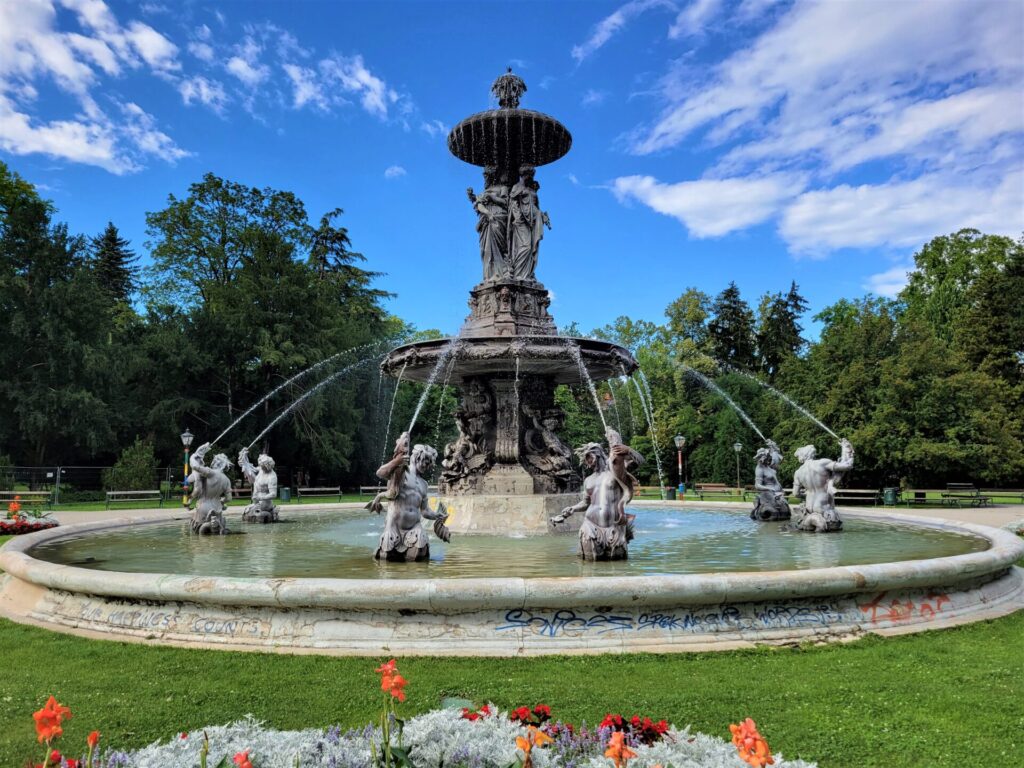
For our second month in Austria, we spent our time in Graz. The city of 300,000 people is actually Austria’s second largest, despite being only 15% the size of Vienna. Until the mid 1800s it was spelled Gratz, which is how it’s still pronounced even though the spelling has changed. The name means “little castle”. The castle no longer exists, but the great viewpoint on the hill above town still does. There is a large student population, mostly from the University of Graz which has over 30,000 enrollees. It’s a diverse town that mixes old school charm with a young vibe.
One of the things that drew us to Graz was that it was designated as a European Capital of Culture back in 2003. A few months ago we visited Novi Sad, one of the three current European Capitals of Culture. I felt like there were a number of similarities between the two places. Among them were a small historic downtown pedestrian area, a river bisecting town, a hill with a view above that river, and a clock tower with the hour and minute hands reversed.
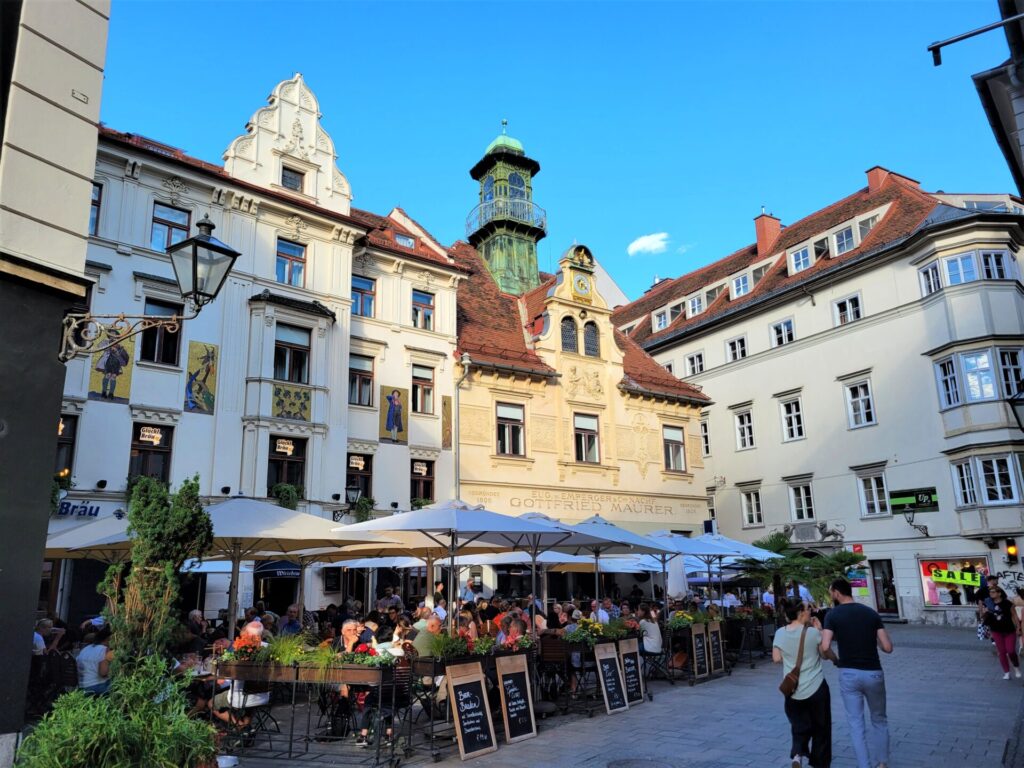
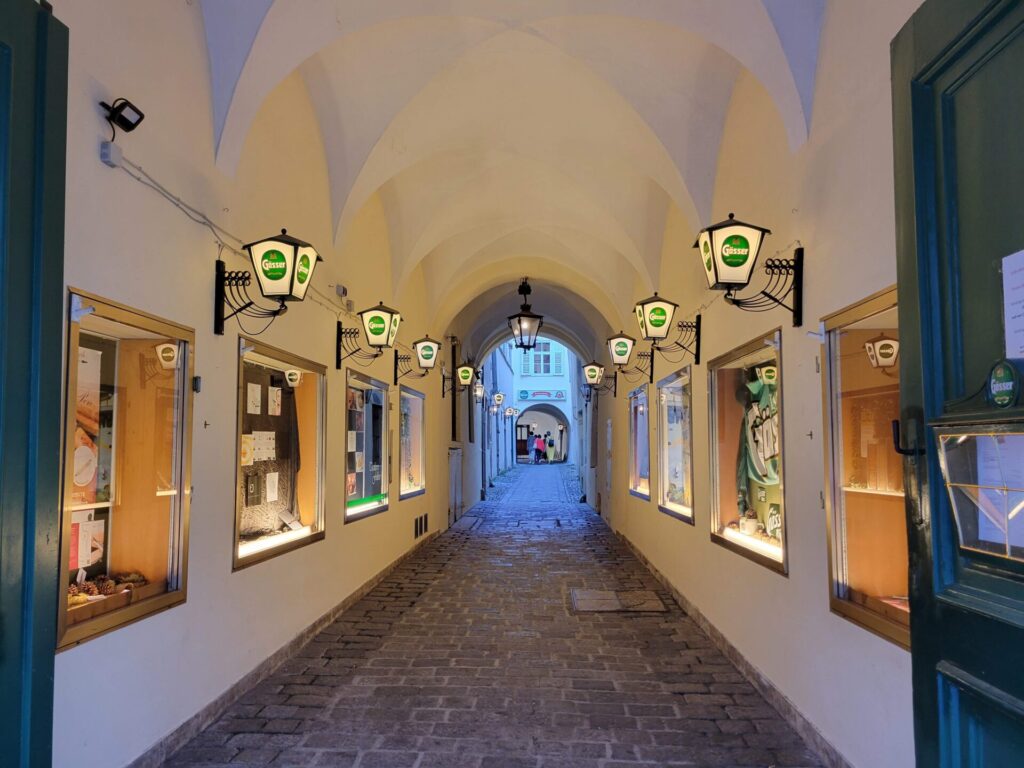
What We Did
The weather was generally nice during our stay so we spent a fair amount of time outside. There are a couple of large parks in the city and a path that follows the Mur River going both north and south of town. We only visited a couple of museums, which was certainly a big change from Vienna.
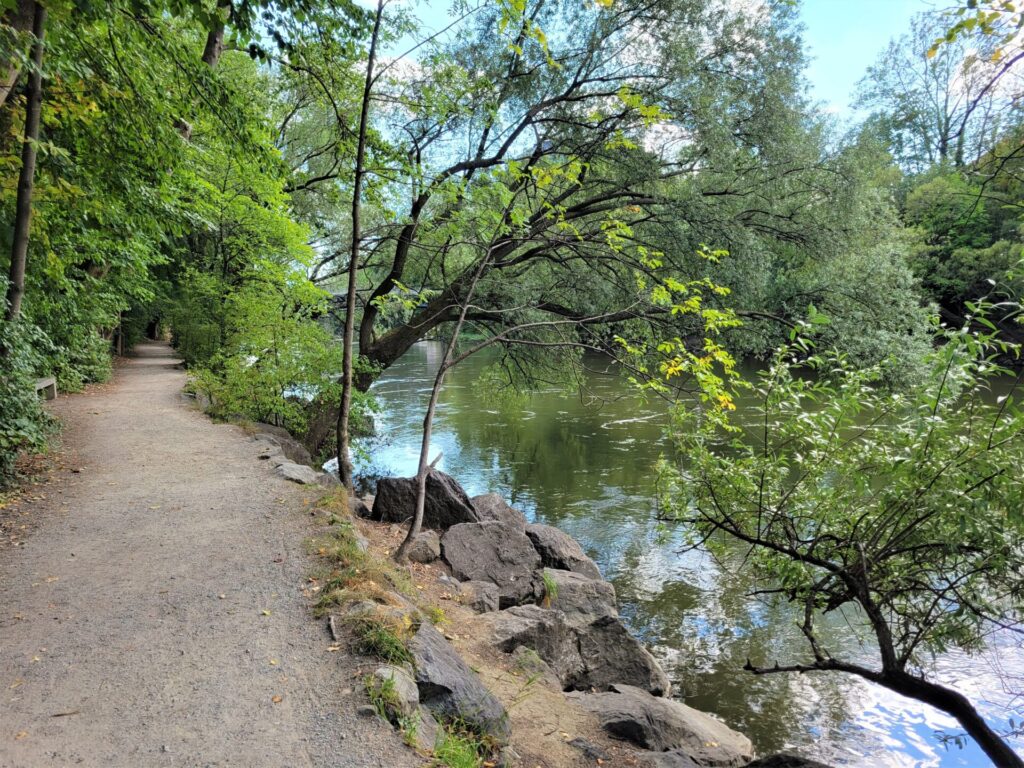
Climb The Hill
On the north edge of downtown, Schlossberg Park towers over the city. This is where the castle used to be, but little of that fortress remains and the area has been turned into urban parkland. It’s an enjoyable spot with great views all around the city. There are a handful of paved paths winding up the side of the hill, many of which are shaded. They have multiple branches to choose from, so each climb can be a little different. There’s also an elevator and a funicular that can whisk visitors to the top in no time. We visited Schlossberg multiple times during our stay in Graz. The reward for the climb are sweeping views of the area surrounding the city along with the city itself.
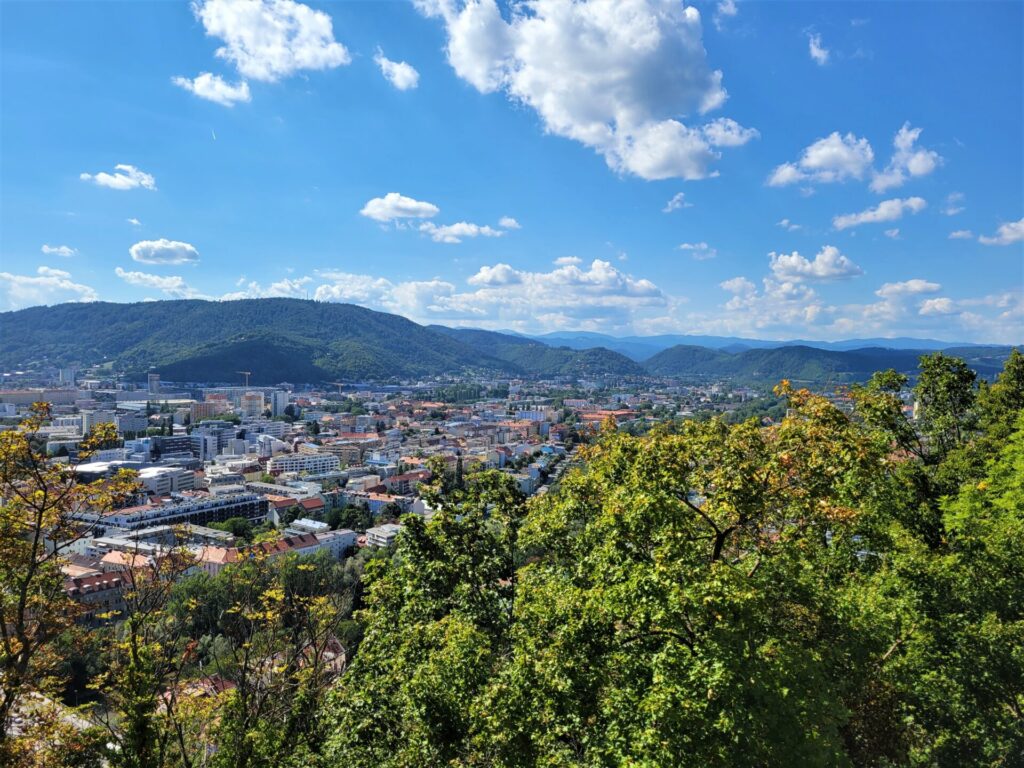
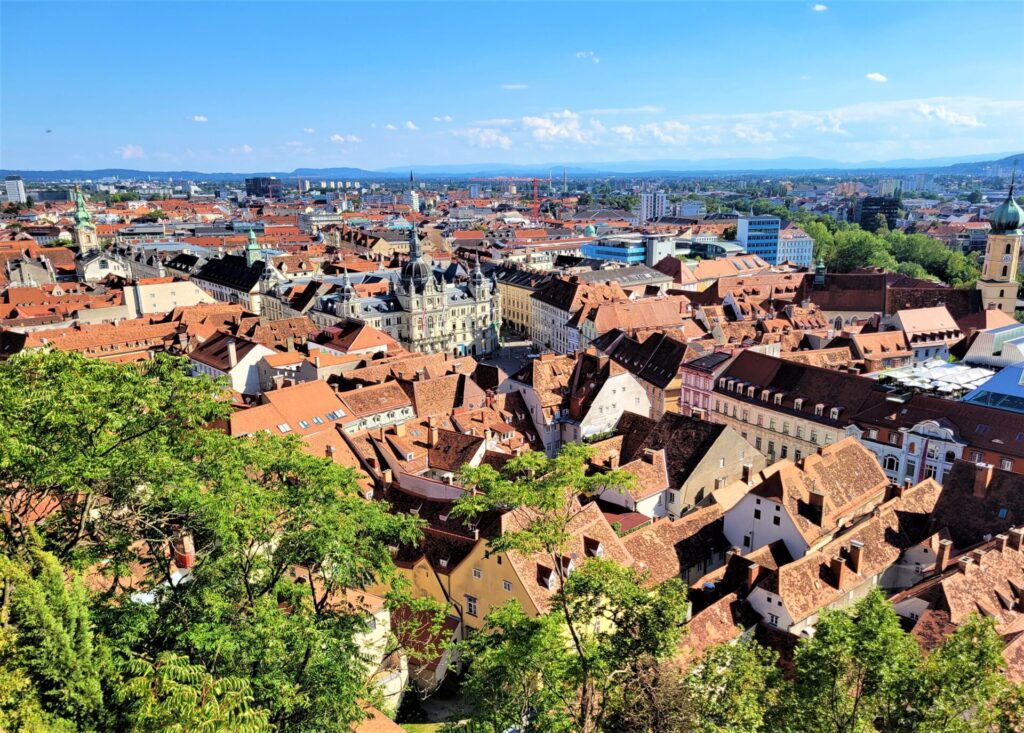
One of the main attractions at the top of the hill is the clock tower. The area around it has some nice planted flowers. For whatever reason, they reversed the minute and hour hands, just like the prominent clock in Novi Sad. There’s also a beer garden, a small museum, and medium-sized concert venue. But the views are the main draw.
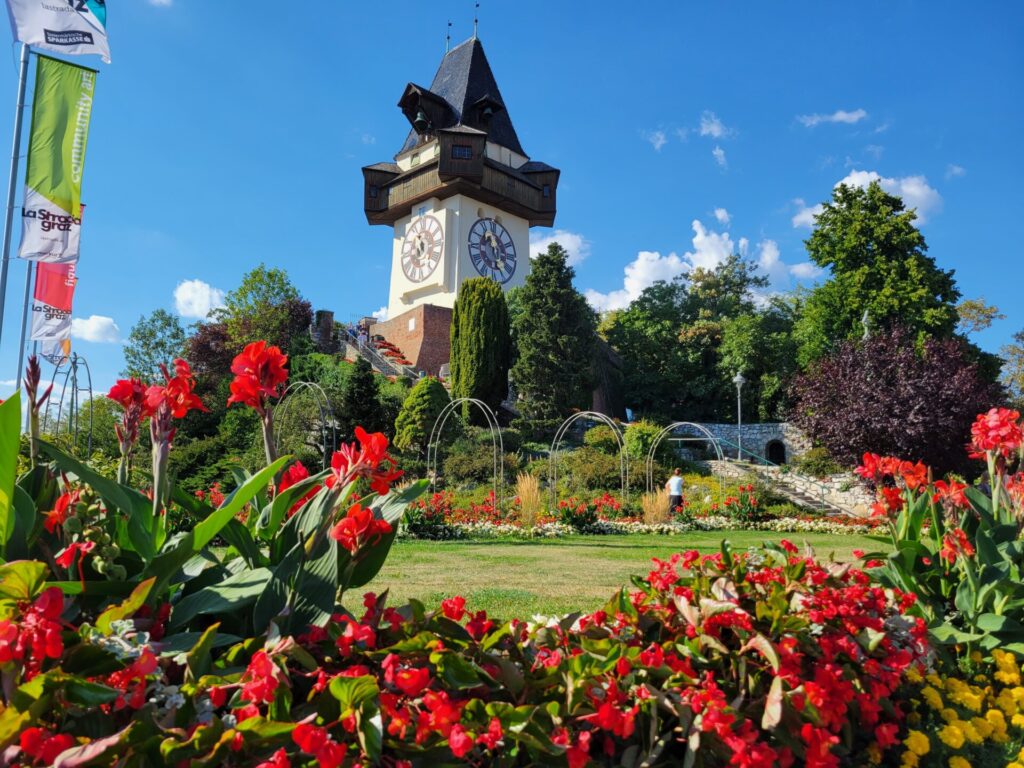
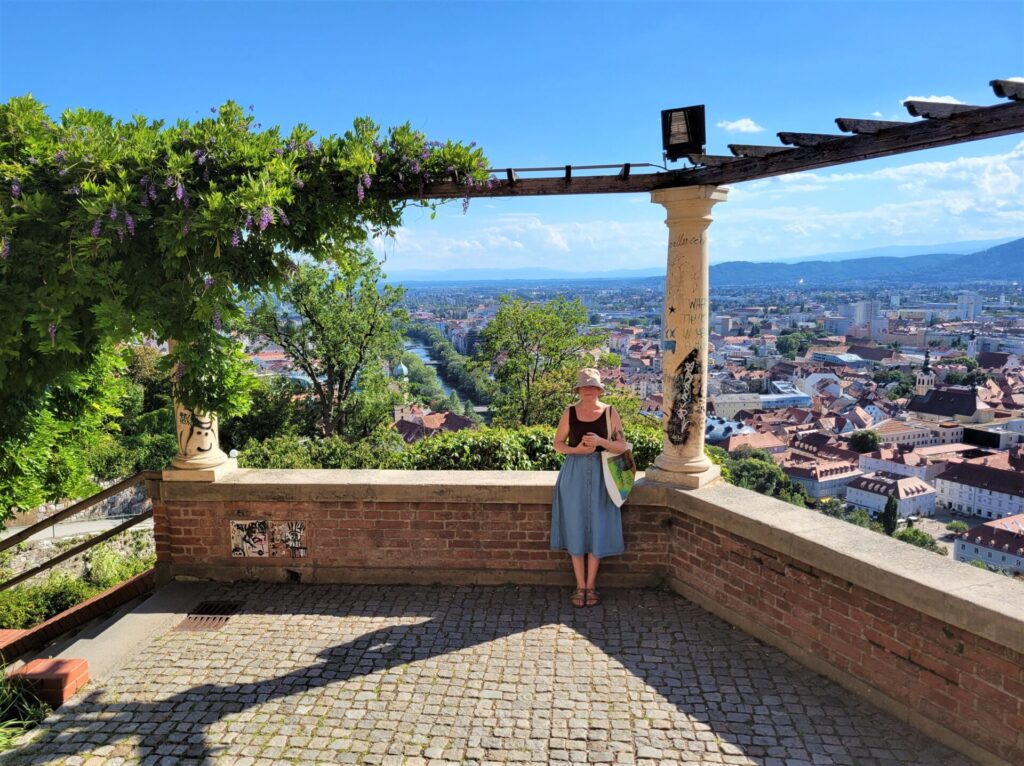
Jacob’s Ladder
Speaking of climbing hills, just outside of town is a hiking path called Jacob’s Ladder. It’s essentially just 350 stairs built into a steep hillside. There are some benches along the way to rest, which are completely necessary as it’s a serious incline. So once you bust your ass to get to the top, what are you rewarded with? Nothing. There’s no view! Definitely not recommended.
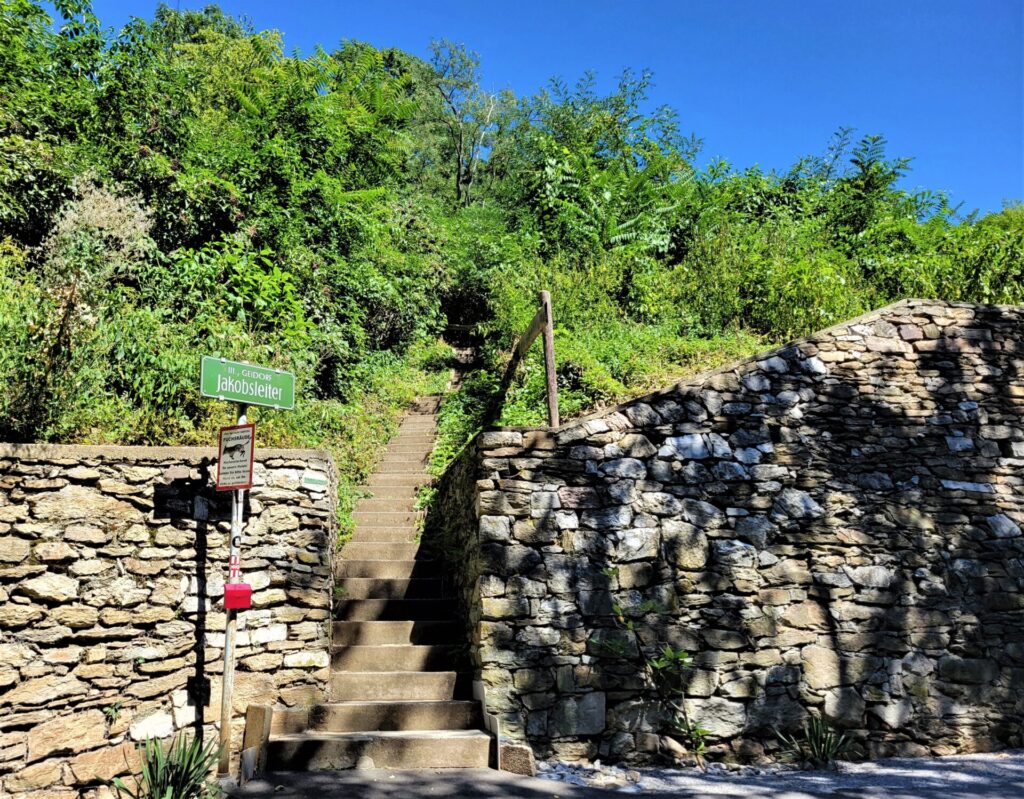

Kunsthaus Graz
Aside from Schlossberg Hill, the other main attraction in downtown Graz is the art museum. The building design is quite strange and sports the nickname of the “Friendly Alien”. Its unique shape is made for hosting similarly unique art. It features two main floors that house temporary exhibitions that focus on some part of the modern art movement. There is no permanent collection. The main exhibition we saw was the Amazons Of Pop, which was a collection of female artists from 1961-1973 exploring the changing world and the role of women and their liberation. I think I enjoyed the building and space as much as I enjoyed the art.
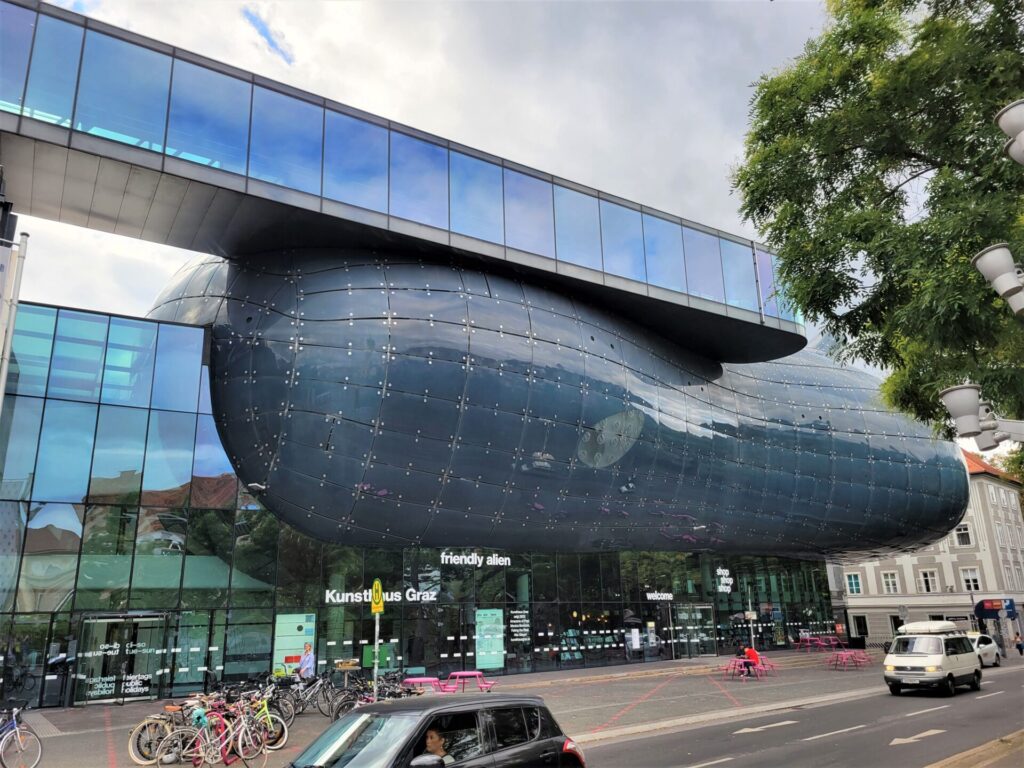
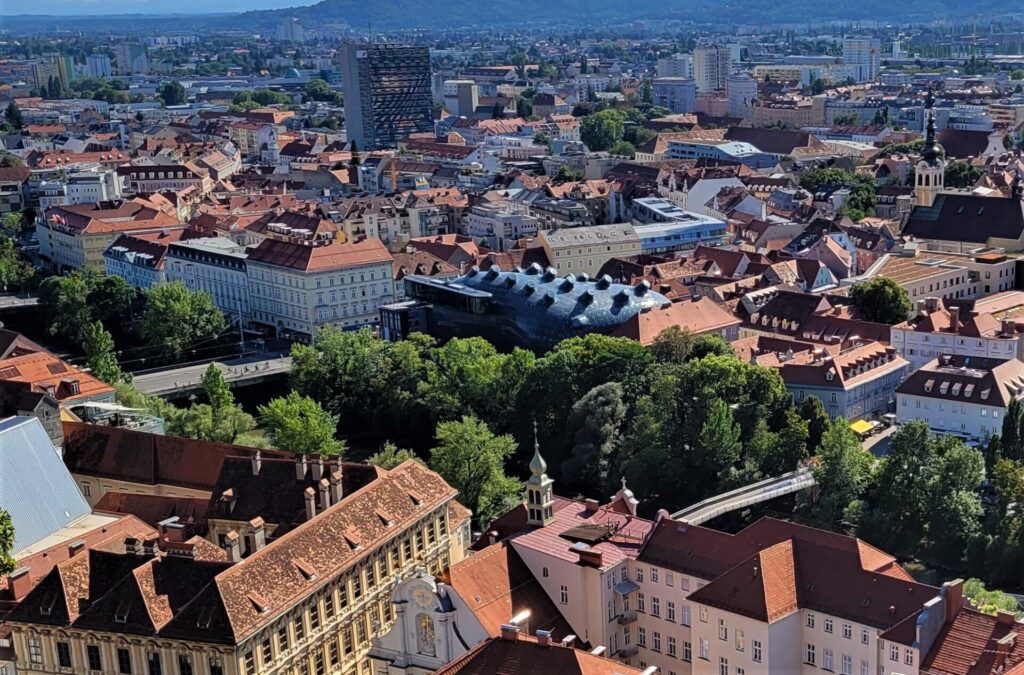

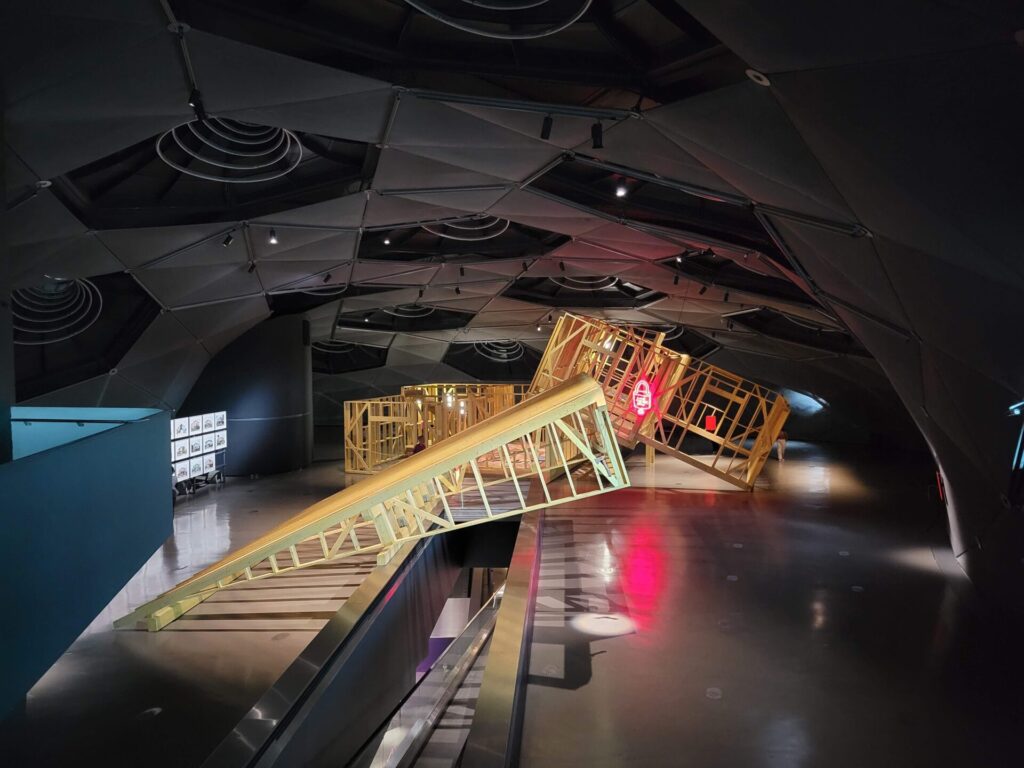
Museum of Perception
The Museum of Perception (Museum der Wahrnehmung) is a small but interesting museum located on the edge of the Augarten park. Here we were treated to a handful of exhibits that test or challenge the notion of what is seen or observed. Many used stereoscopes or mirrors (or both) to add depth or texture to 2D objects. The art also explores the question of whether people perceive the same thing in the same way. I enjoyed the 30 minutes we spent there. It was only $3, so it was easily worth it. (Cameras don’t really capture the essence of this one.)
Schloss Eggenberg
On the far west edge of town sits the Eggenberg Palace, which is a UNESCO World Heritage site. It was designed to have symmetry with nature, featuring 365 outer windows for each day of the year. 52 of those windows are on the second floor, representing the weeks in a year. The 24 state rooms on the second floor represent each hour in the day. It also has 4 towers oriented to the cardinal directions, which also represent the 4 seasons. Not much of this is really apparent when you’re there though. At least it doesn’t really add to the viewing experience. Especially coming from Vienna, where we gazed upon the Schloss Schonbrunn multiple times, I found the outside to be a little underwhelming.
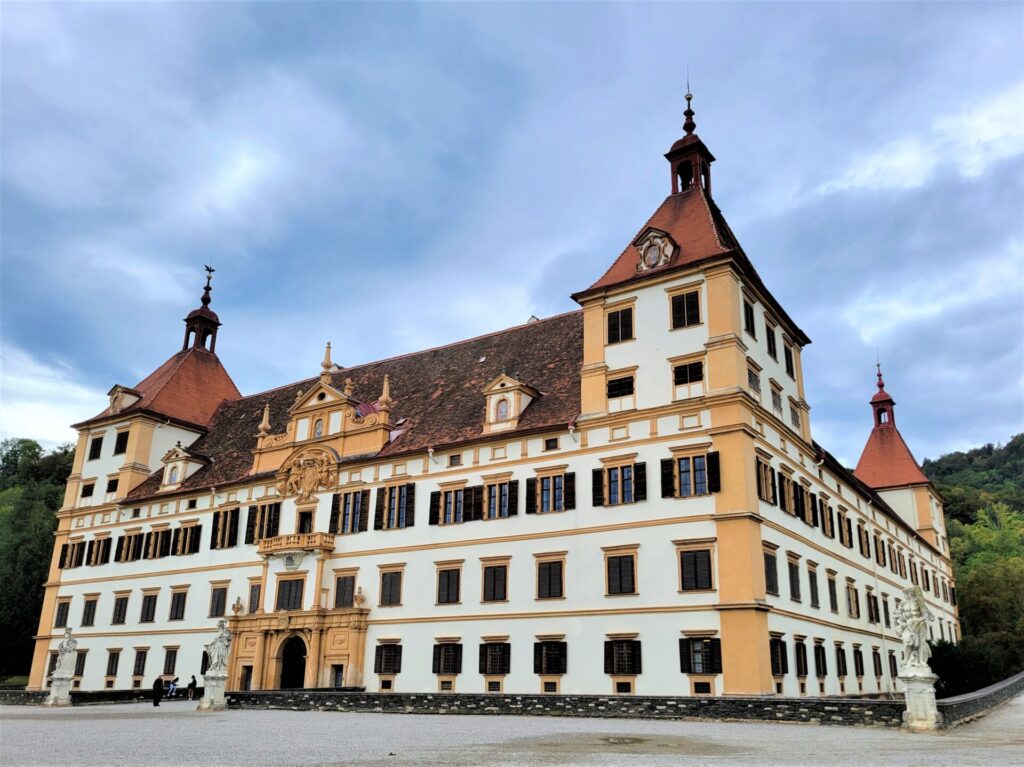
The inside is accessible only through guided tour, and there are 6 English speaking tours per day that take about an hour. This grants access to the upper floor with the 52 windows and the fanciest of the rooms where the visiting nobles were entertained.
Our guide explained that unlike most palaces, the Eggenberg furniture and artwork is all original and not staged with newer items made to look like they were from that time period. The palace was finished in the late 1600s and most of the rooms shortly after that. So we got to see two dozen classically decorated rooms where even the wallpaper and chairs were older than the US. Sadly, they asked that no pictures be taken, so I have little photographic evidence. But it was pretty interesting and our guide was quite entertaining.

Included with the tour ticket was access to the coin collection and an art gallery, which we enjoyed, and an archaeology museum, which we skipped. The coin collection was interesting, but all descriptions were all in German only, so we didn’t get the full experience.
The art gallery was much bigger than I thought it was going to be, encompassing most of the first floor of the large palace. It’s mostly filled with Medieval religious paintings, but there’s some variety. It could’ve easily been a standalone museum.
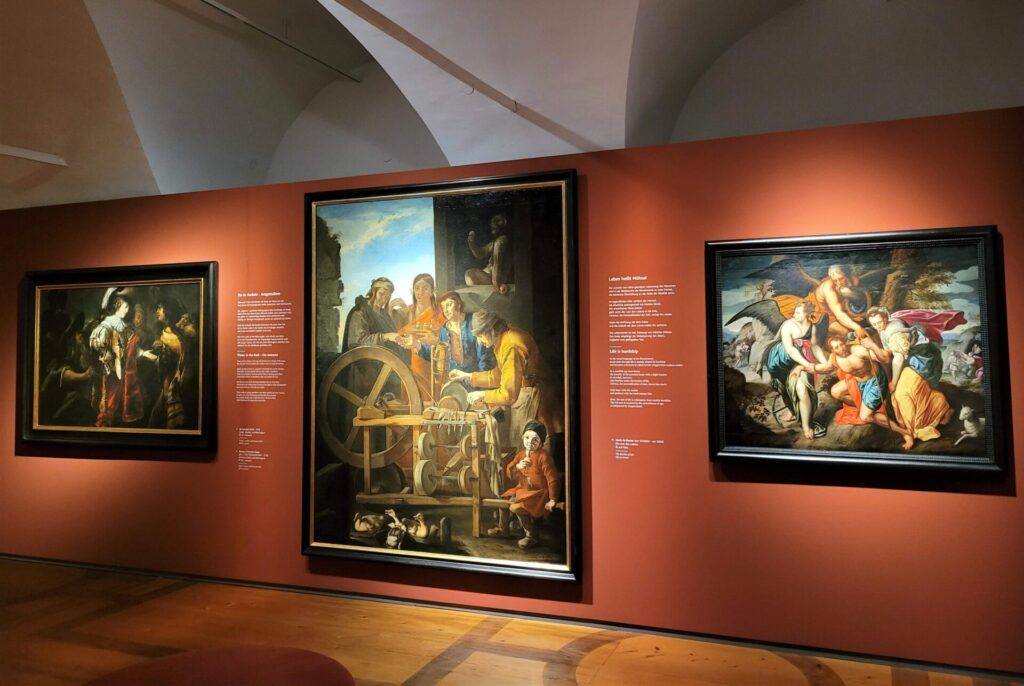
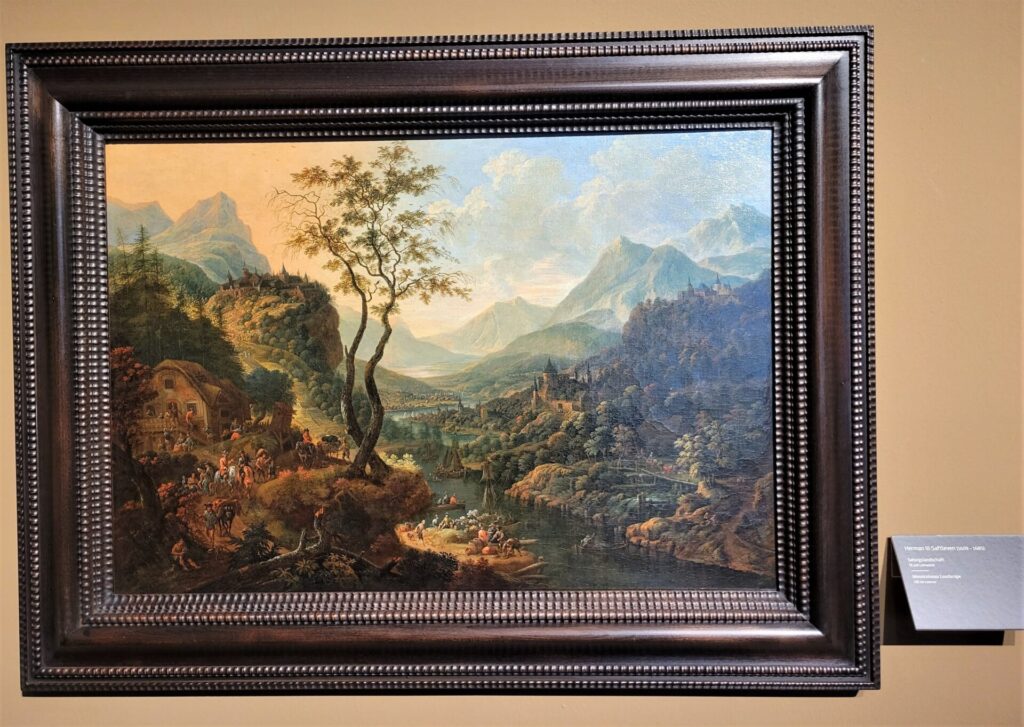
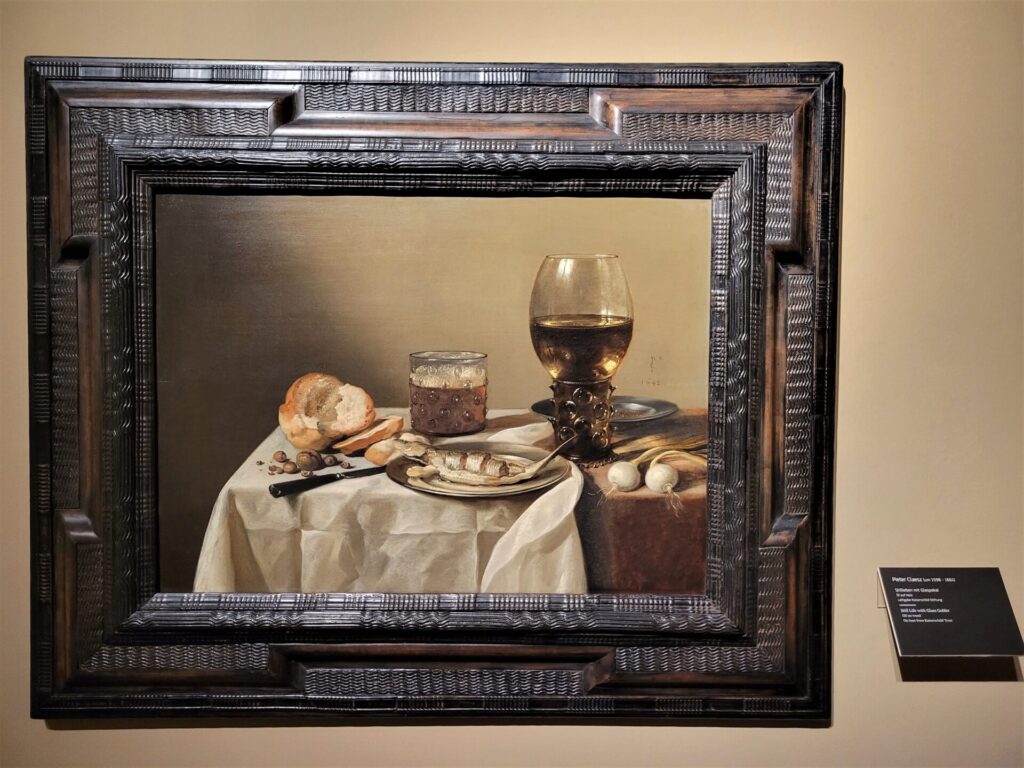
After we toured the palace and the museums within, we spent a little time exploring the grounds surrounding the mansion. They are home to dozens of peacocks. We didn’t see any peahens, so they were either well hidden or don’t exist. Aside from a couple of flower beds and some minor hedge sculpting, the grounds are mostly just grass and trees, which we can see in any park, so we didn’t need to spend a ton of extra time after we got our fill of exotic birds.
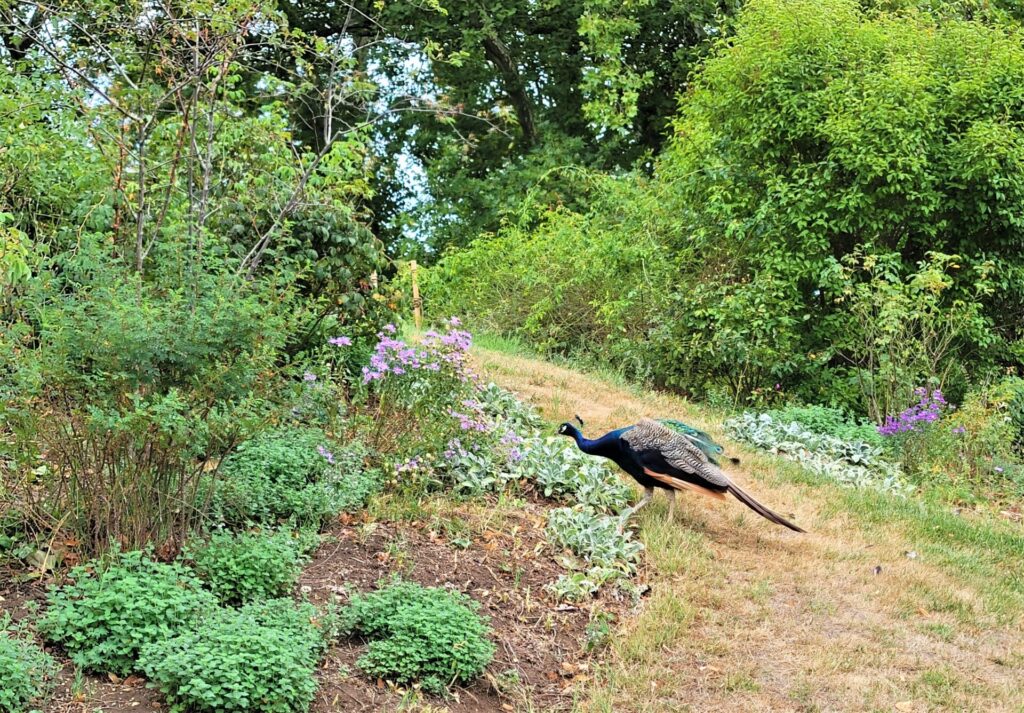
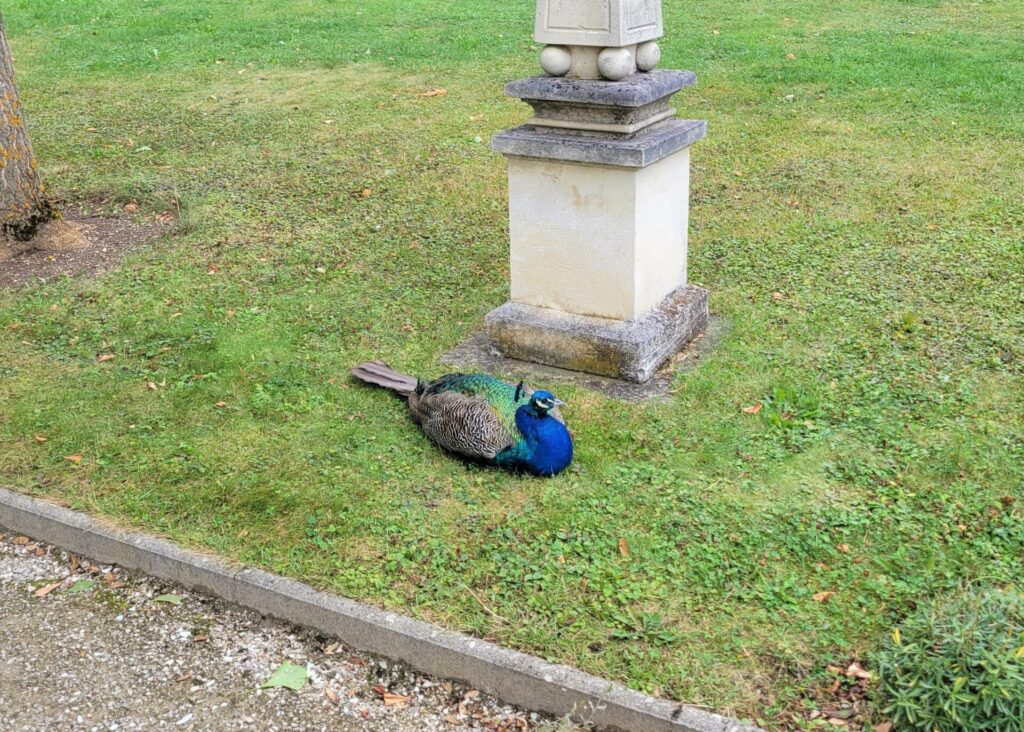
Botanical Garden
We really enjoyed the botanical garden run by the University of Graz. It features 4 very large and unique greenhouse buildings that each offer a different environment like desert or tropical hothouse. Surrounding those is a well maintained outdoor space with a large variety of trees and plants arranged by geographical region. It’s also free, which was certainly surprising considering how much work it must take to maintain it. We enjoyed this garden a lot and went twice during our 4 weeks.
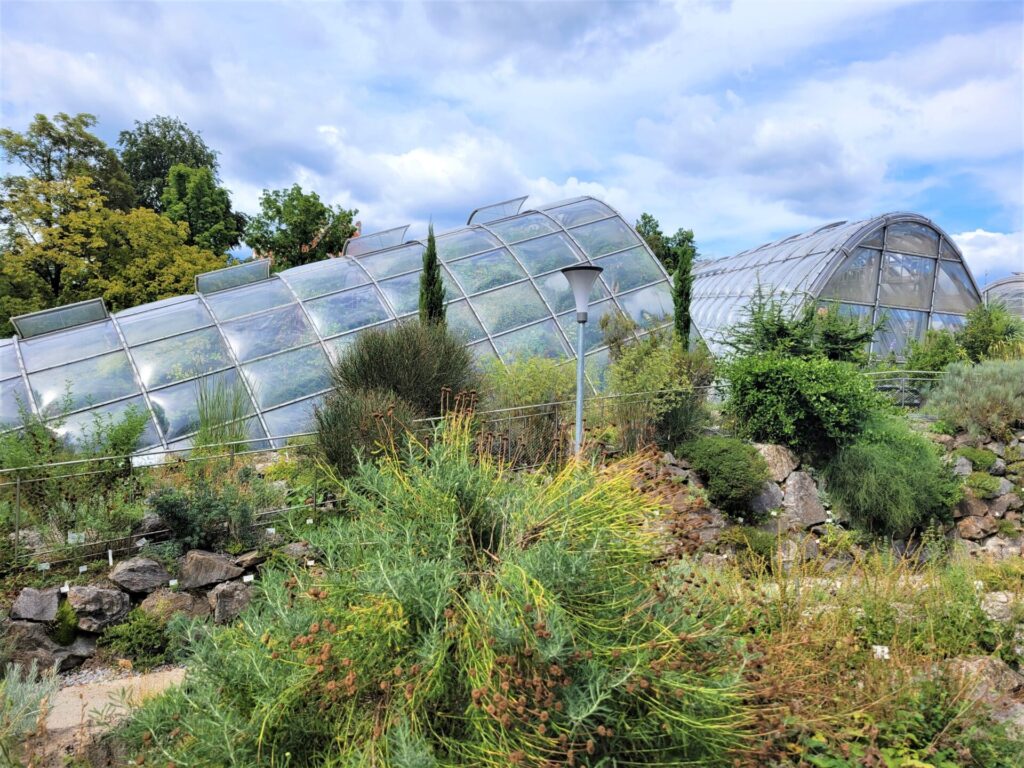
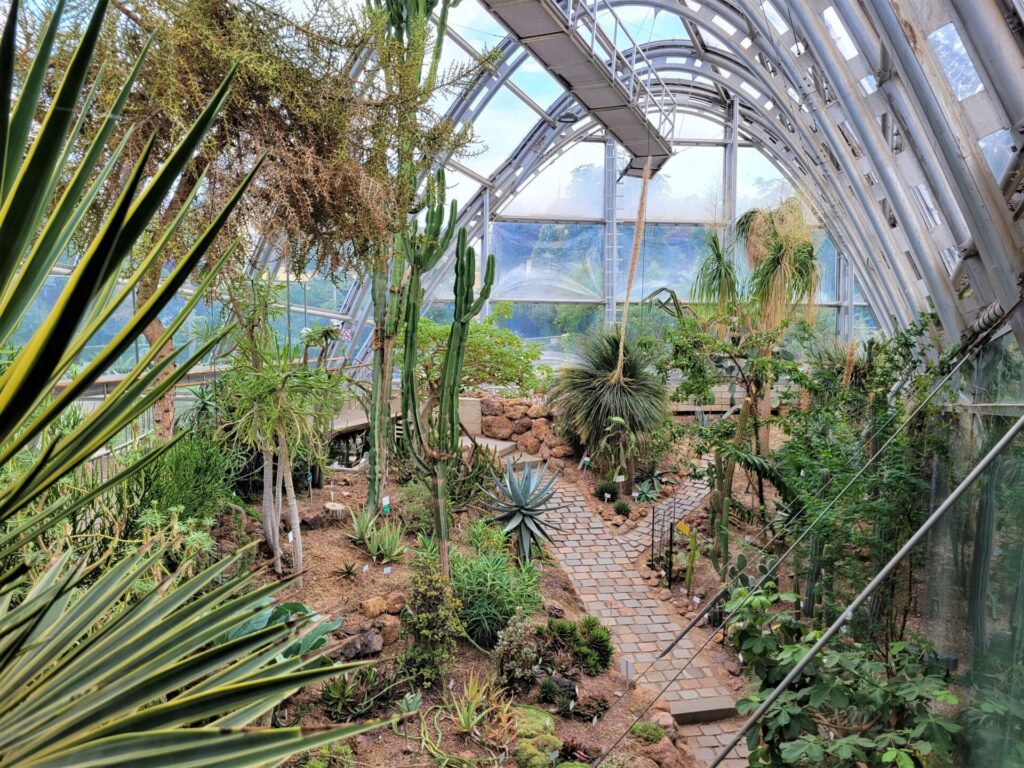
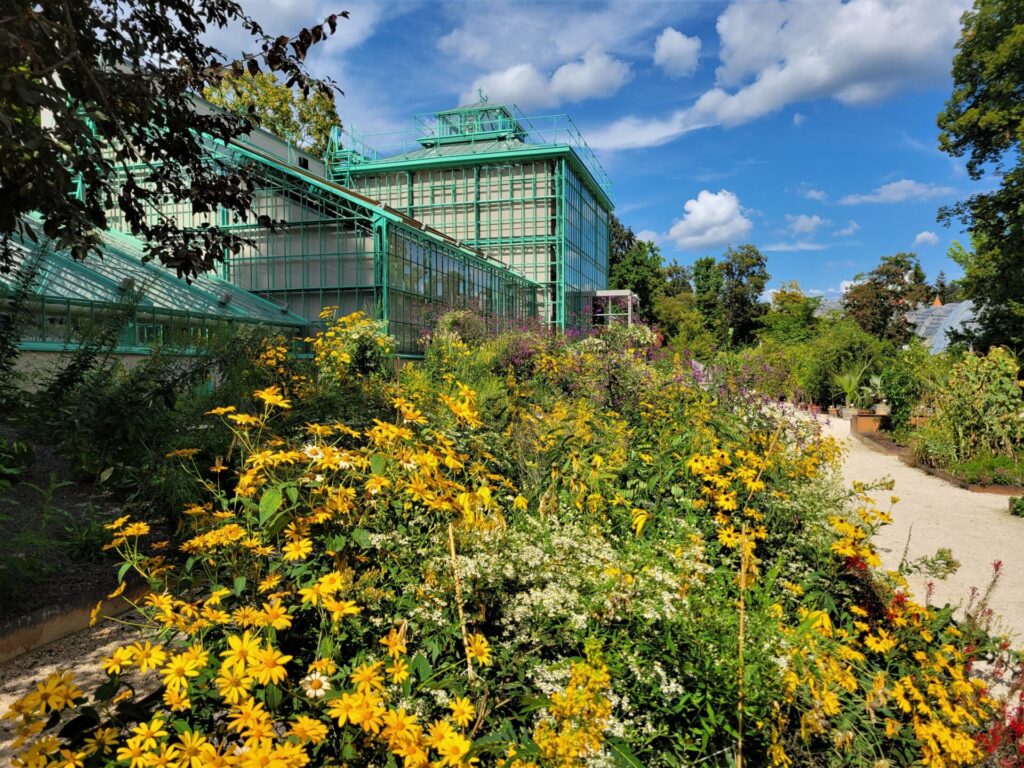
Downtown Pedestrian Zone
Graz features a pleasant pedestrian-only downtown area that spans several square blocks. There are numerous restaurants and bars with outdoor seating and plenty of shopping. There are also dozens of back alleys and windy lanes. It’s generally a pretty cute area. One night they hosted a massive dinner party in front of the city hall. This huge catered event featured nearly 1000 guests and almost sent Katie on a downward spiral of bad work memories. I enjoyed looking at the spectacle though.
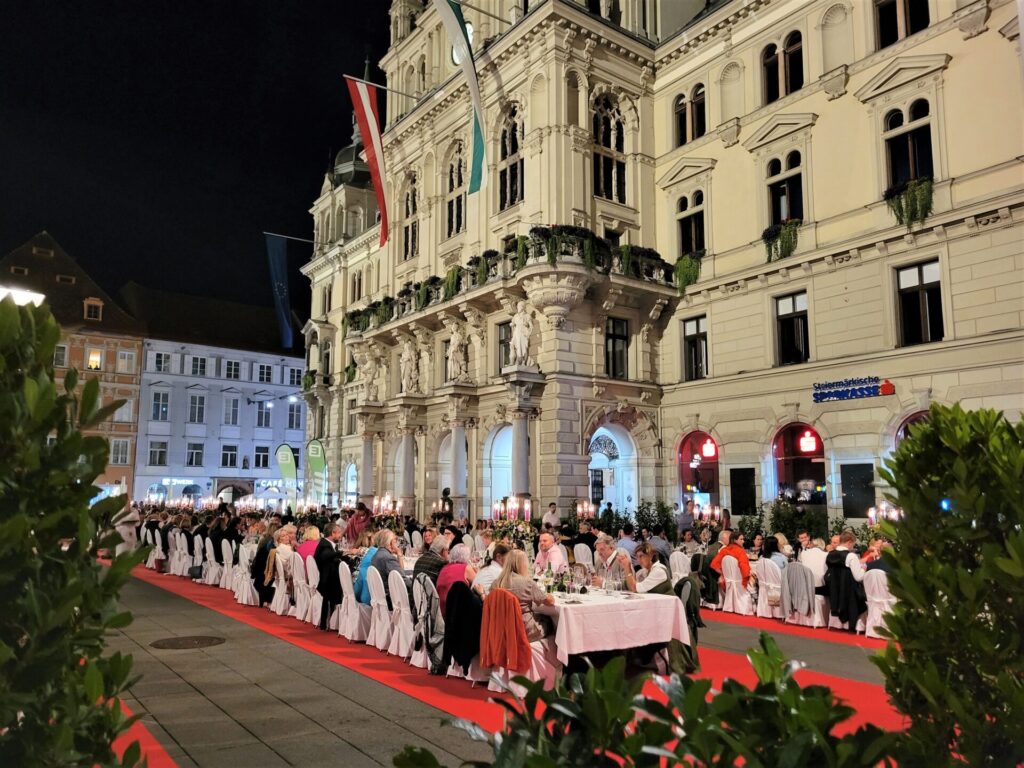
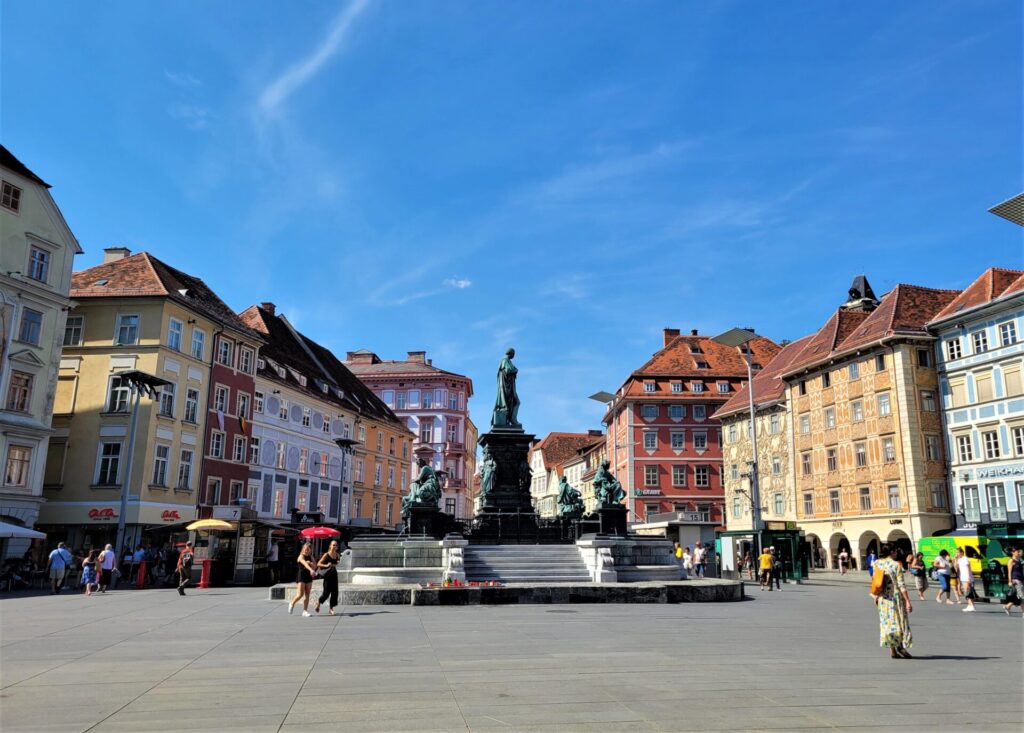
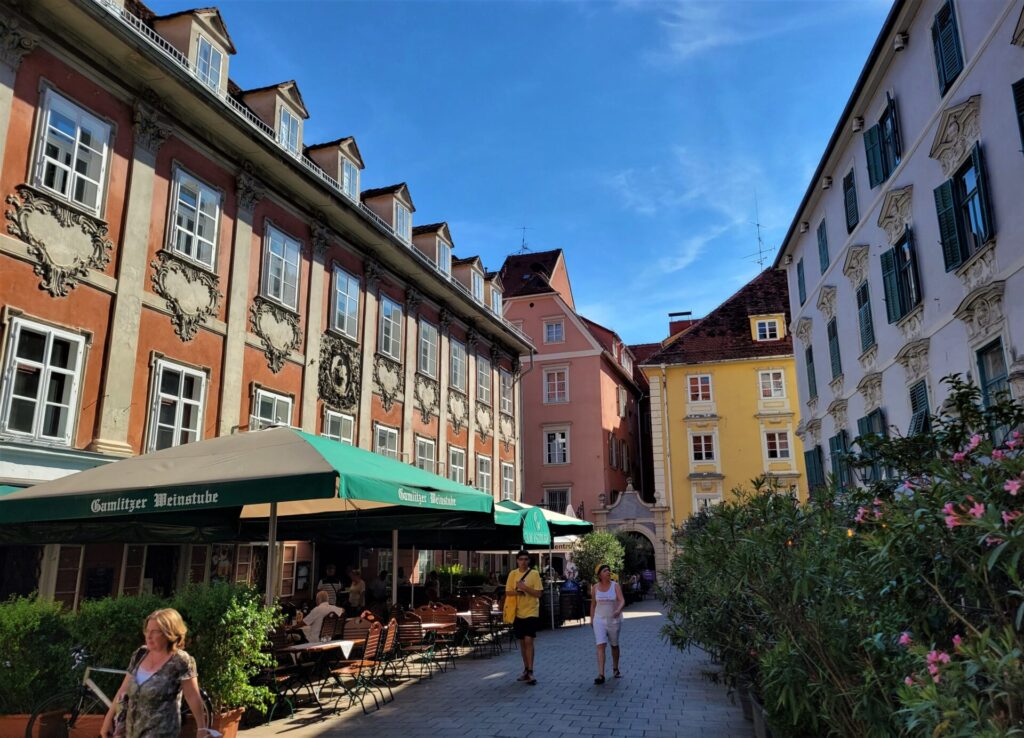
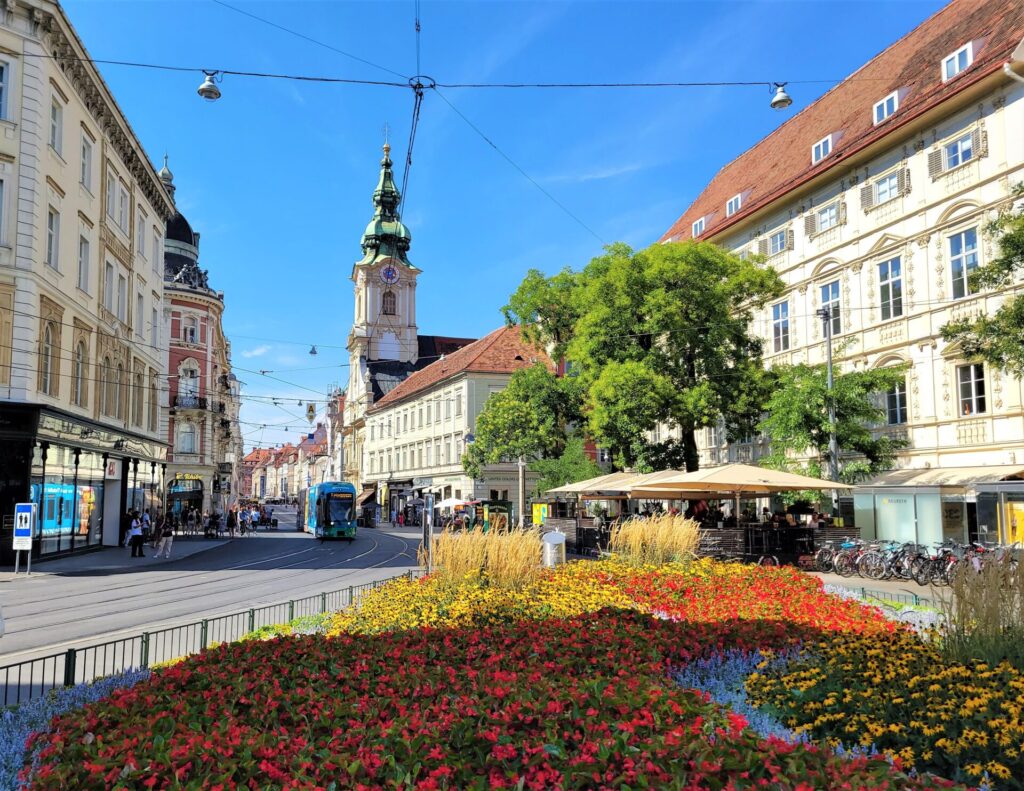
Busted By The Cops
Compared to the US, alcohol restrictions are extremely relaxed in almost all of Europe. It’s quite common to see adults of all ages enjoying a malted beverage on a public bench or in the park. One nice day we decided to grab a beer, a pretzel, and a tube of mustard at the grocery store for an afternoon snack. We were obliviously munching and drinking on a bench downtown when a cop approached us. He said something in German, which we didn’t understand, then repeated it in English. Drinking in this area was forbidden! We were breaking the law!
He walked off right afterwards and we still had our beers, so obviously it wasn’t that big a deal. Nevertheless, we got up and walked a few blocks to finish our snack on the other side of the river, outside of the proper downtown.
I looked it up later and apparently it’s just the few blocks around the city hall that has this restriction. It’s one of only four spots in the whole country where you can’t have a beer in public. So naturally, we picked that one for our urban picnic. If we would’ve walked 2 blocks from the grocery store in the other direction, it would’ve been just fine. But since we didn’t we are now scofflaws.
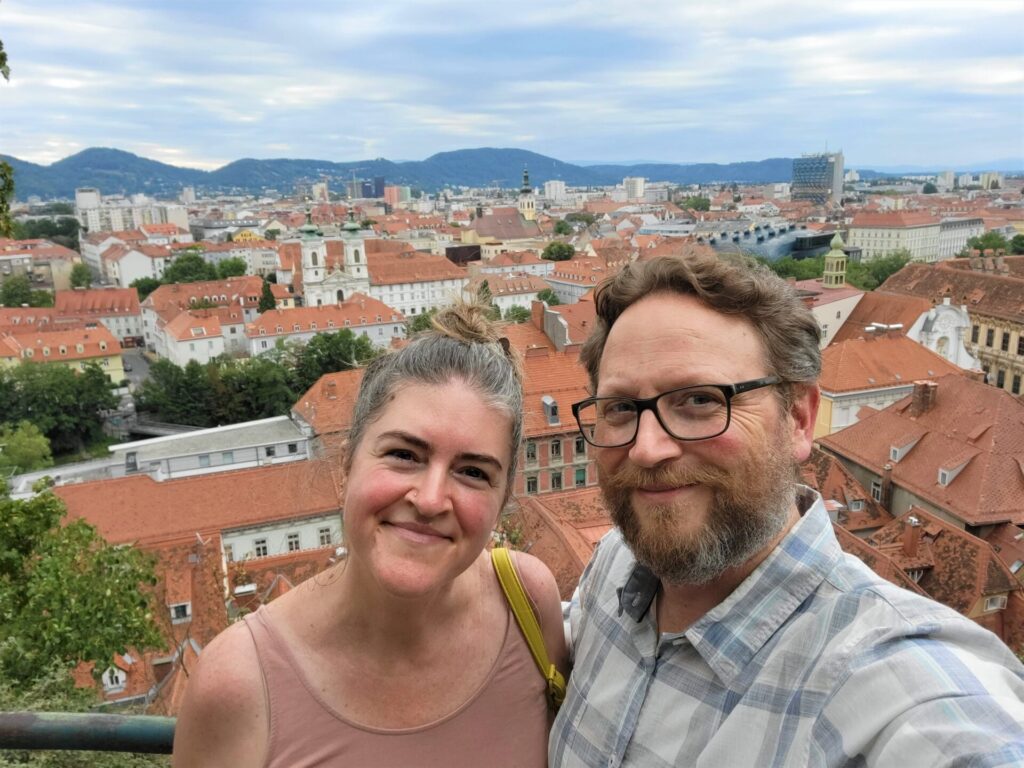
Vending Machines
Austrians have excellent work/life balance. Grocery stores in Graz often close at 7:30pm, even during the week. Most businesses close by early afternoon on Saturdays and nearly everything aside from a few restaurants and museums are completely closed on Sundays. Because of this, some businesses have really impressive vending machines set up.
We saw multiple butcher shops offering automated service so that people could still buy their wares after hours. Filled with sausages, ribs, potato salads, and all the hearty staples, these things are especially full on Saturdays to cover the weekend buying. We found a bread vending machine in Vienna with the same principles. There are even entire “stores” that consist only of vending machines. These sell a wide variety of items like bottles of Jagermeister, dried spaghetti noodles, gummy bears, cat food, and toilet paper. Regular stores close early, so if you’re hungry at odd hours, or didn’t stock up for Sunday, at least there are options.
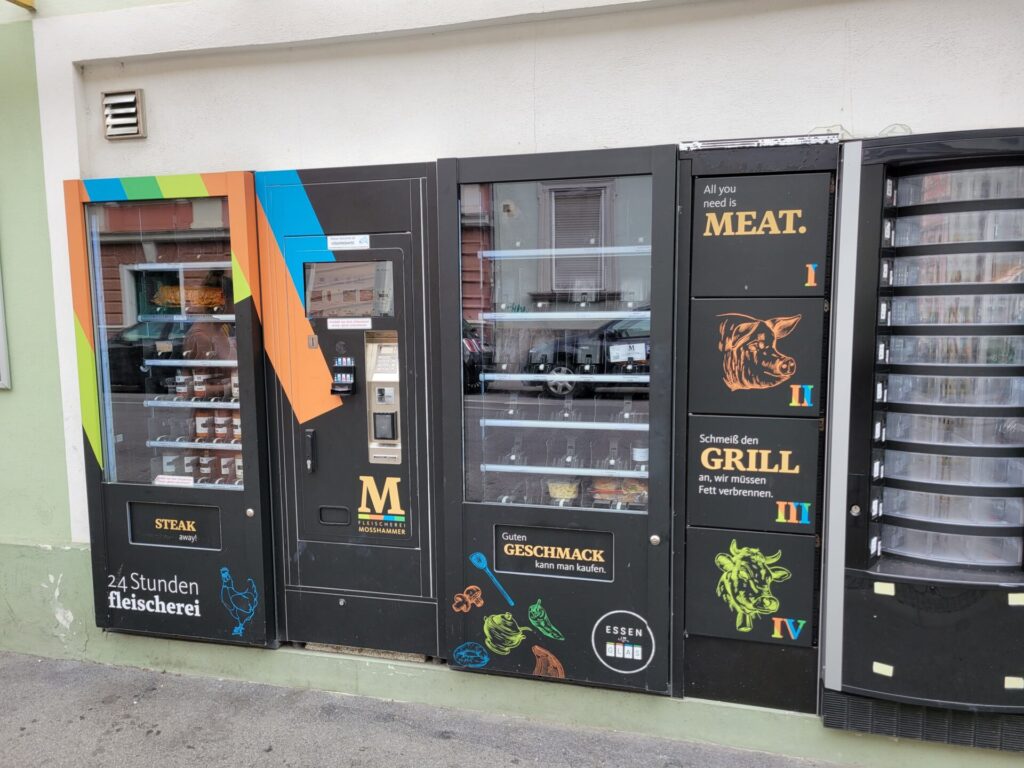
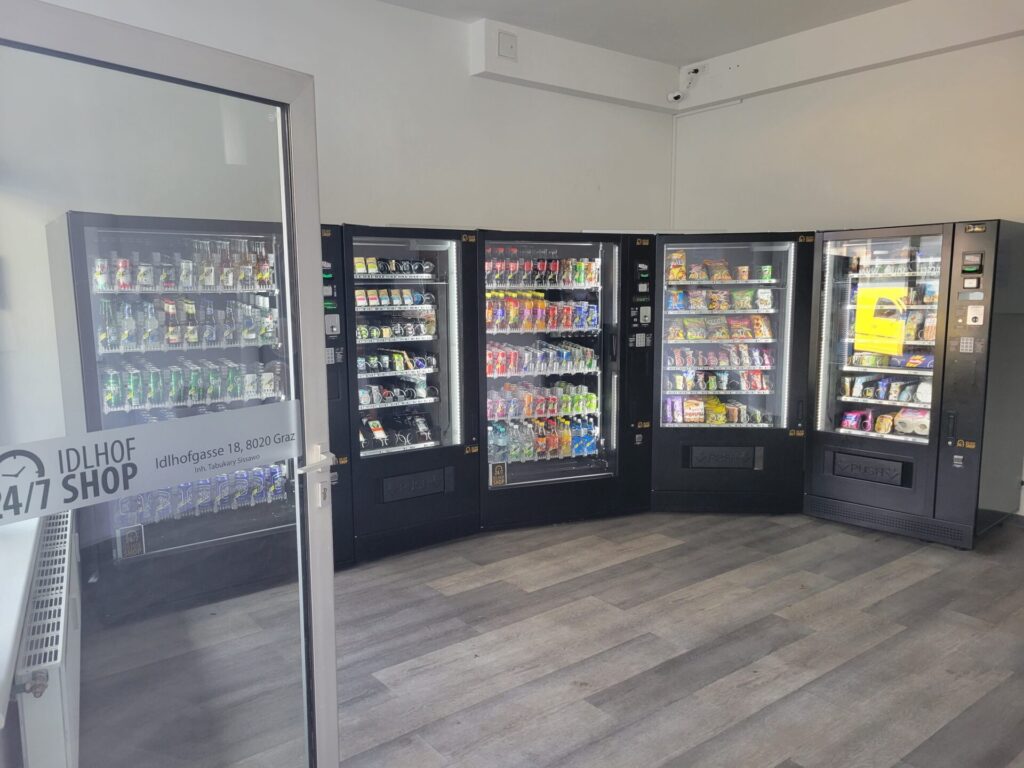
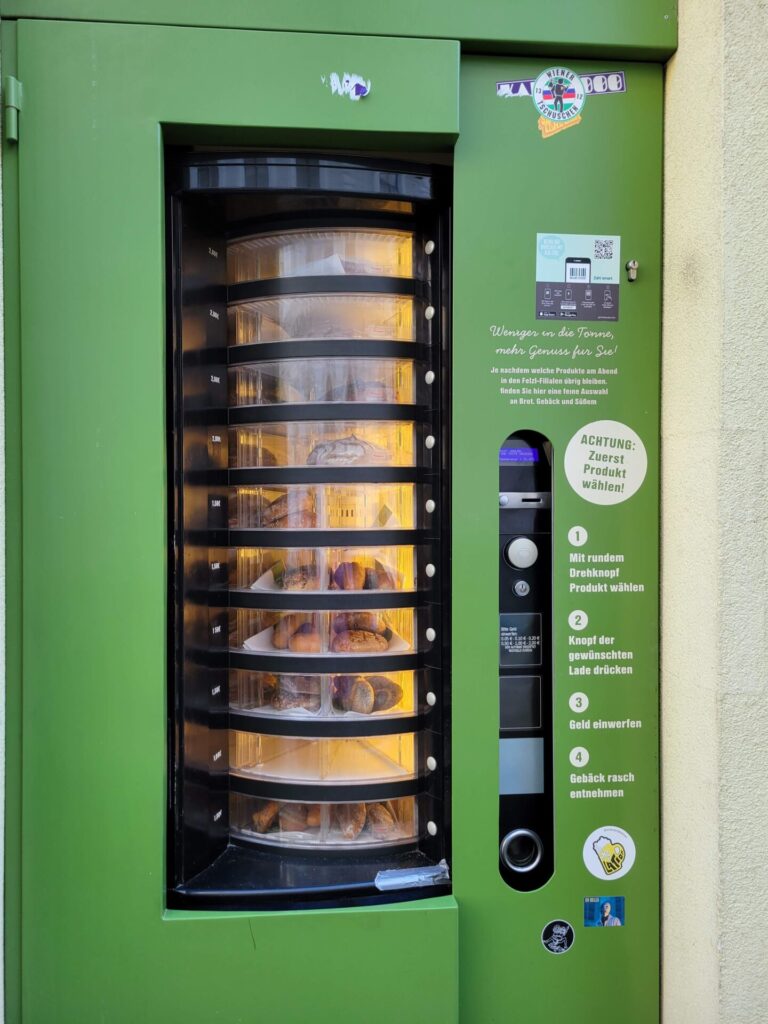
Where We Stayed
We rented a large one bedroom apartment about 10 minutes west of the downtown area. It was a bit older, but had a lot of space, including two balconies and a nice cross breeze. It was on a quiet street, which was a nice change from our last apartment in Vienna. Our host owned multiple apartments in the same building, and for the last week of our stay, Katie’s mom and sister rented one of them. So we all got to hang out around Graz together for the week.
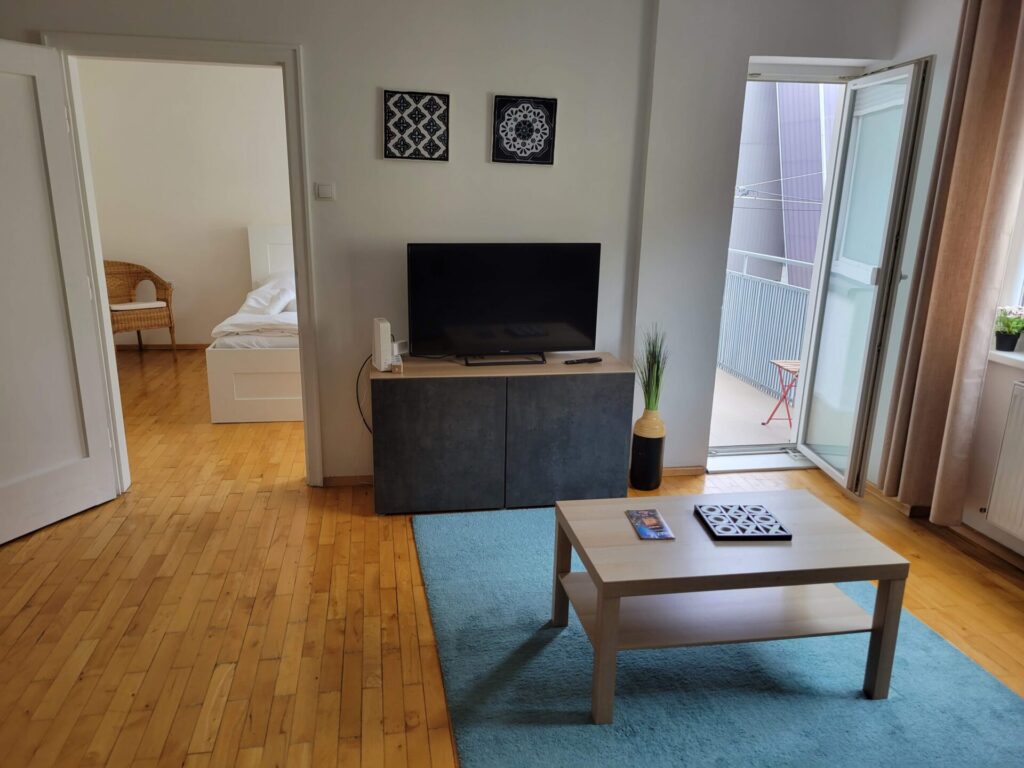

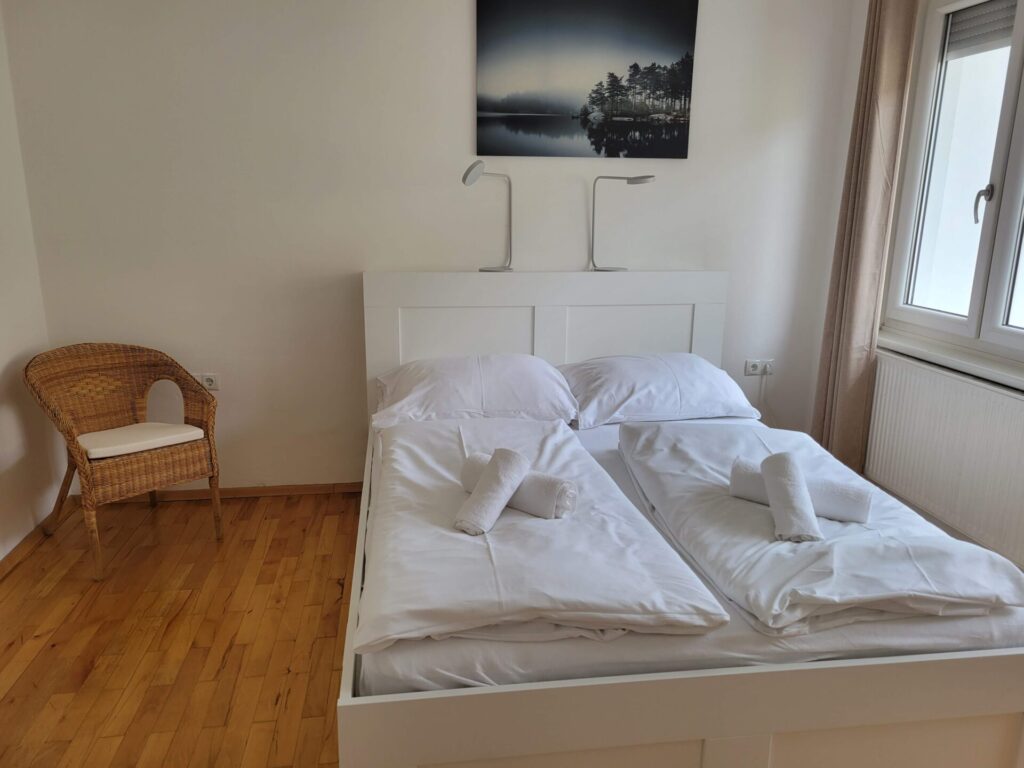
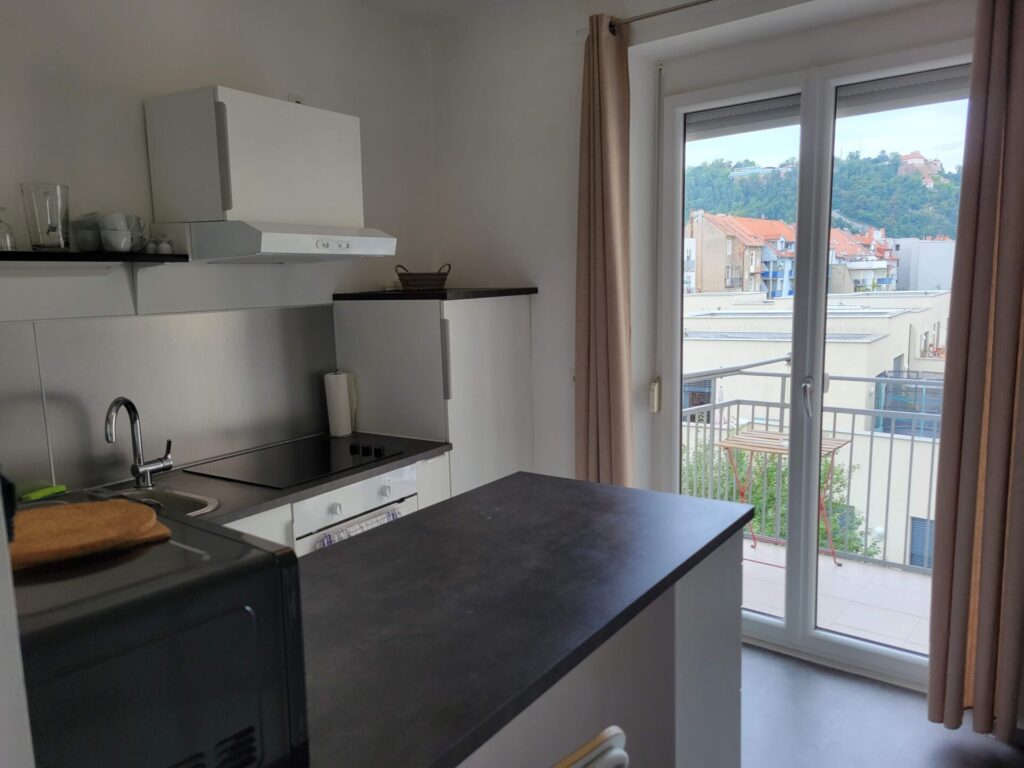
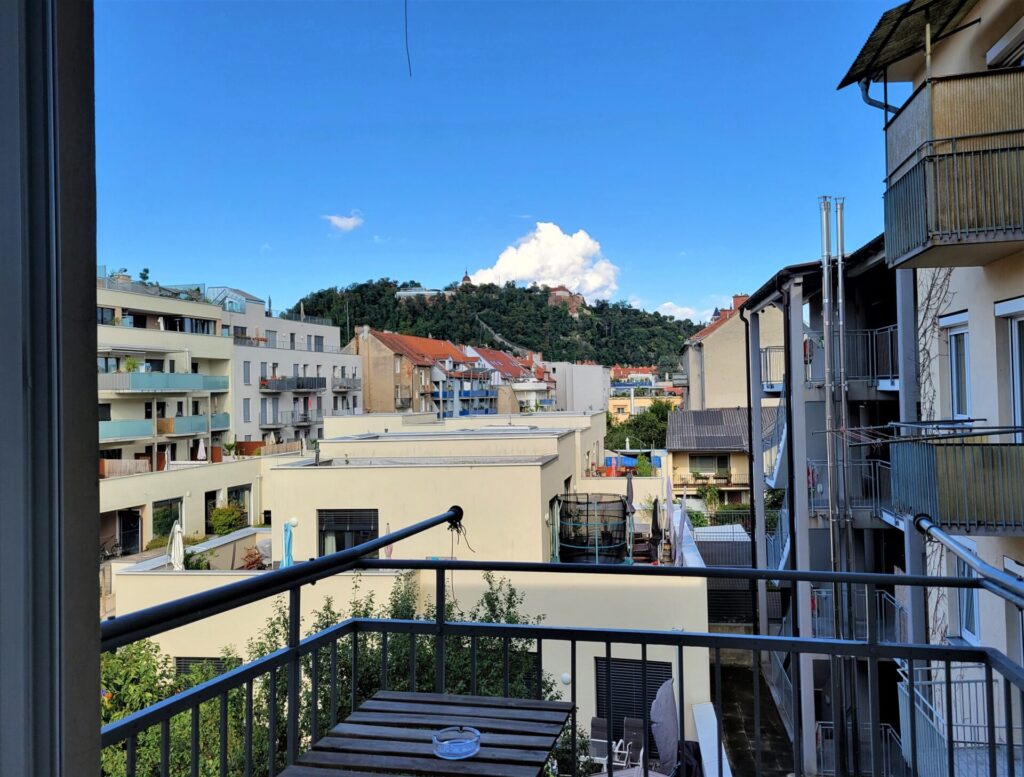
What We Spent
For our four weeks in Graz, we spent $2811. Adding in our regular monthly bills, our total spending for the 28 nights was $3005. That’s a little higher than normal, mostly driven up by a couple of doctor’s visits for some overdue preventative care which cost $631. Because of that, Graz was our most expensive stop yet and we are now on pace to spend over $30k this year. (Don’t worry, that is very unlikely to happen.)
Overall, I thought our visit to Graz was pretty good. It’s not the most exciting city around, but it has some interesting things going on. Tourists normally choose Salzburg or Innsbruck for smaller Austrian cities, and I don’t see that changing. Graz is a perfectly nice city though. People moving at a tourist pace could cover most of it in a couple of days. I doubt we’d return, but it had its charms and it was a nice place to spend some time and relax after Vienna.
I love how you two walk into a new city in a new country and make a home out of it for a month. I bet over time you built a system around that. That is really neat.
Question I have is how do you deal with money? do you withdraw cash from an ATM? or mostly a credit card without foreign transaction fees? do you use contactless payments often? have you been locked out of your account because you’re moving so often? (ie looked suspicious to the bank)
Hi KJ,
We pay for most day to day items with card. There are a bunch of credit cards with no foreign transaction fees, so we use one or more of those. (We periodically open new cards for sign up bonuses to help offset some travel costs, so there’s isn’t one single card I’d recommend.) But we do sometimes spend cash like at the farmers market or if the transaction is only a few bucks. Cash is easy enough to come by as ATMs are everywhere. Charles Schwab offers full refunds of any ATM fees worldwide, so we use them so we don’t have to pay any extra when we need physical money.
The moving around part isn’t really a problem at all. Most banks don’t even want your travel notifications anymore like they have in the past. I think it’s the new chips that make it really hard to copy, so if you’re using the card, they are 99.9999% sure it’s you. Plus, I’m sure whatever AI bot they have monitoring our spending data already knows that we’re going to be in different countries often so we’ve not experienced any problems.
Very cool! I love these city posts because my spouse is set to RE in a year (we are already FI and I am retired) and I really want to try a similar style of travel. Where next? Any plans for Latin America?
Thanks Dee! We’ll be sticking around Europe through the winter and next spring. Not sure where exactly, but somewhere in the Balkans followed by somewhere in the Schengen Zone. At some point next summer we’ll be due for a trip back to the US, but no clue on where we’d be headed after that.